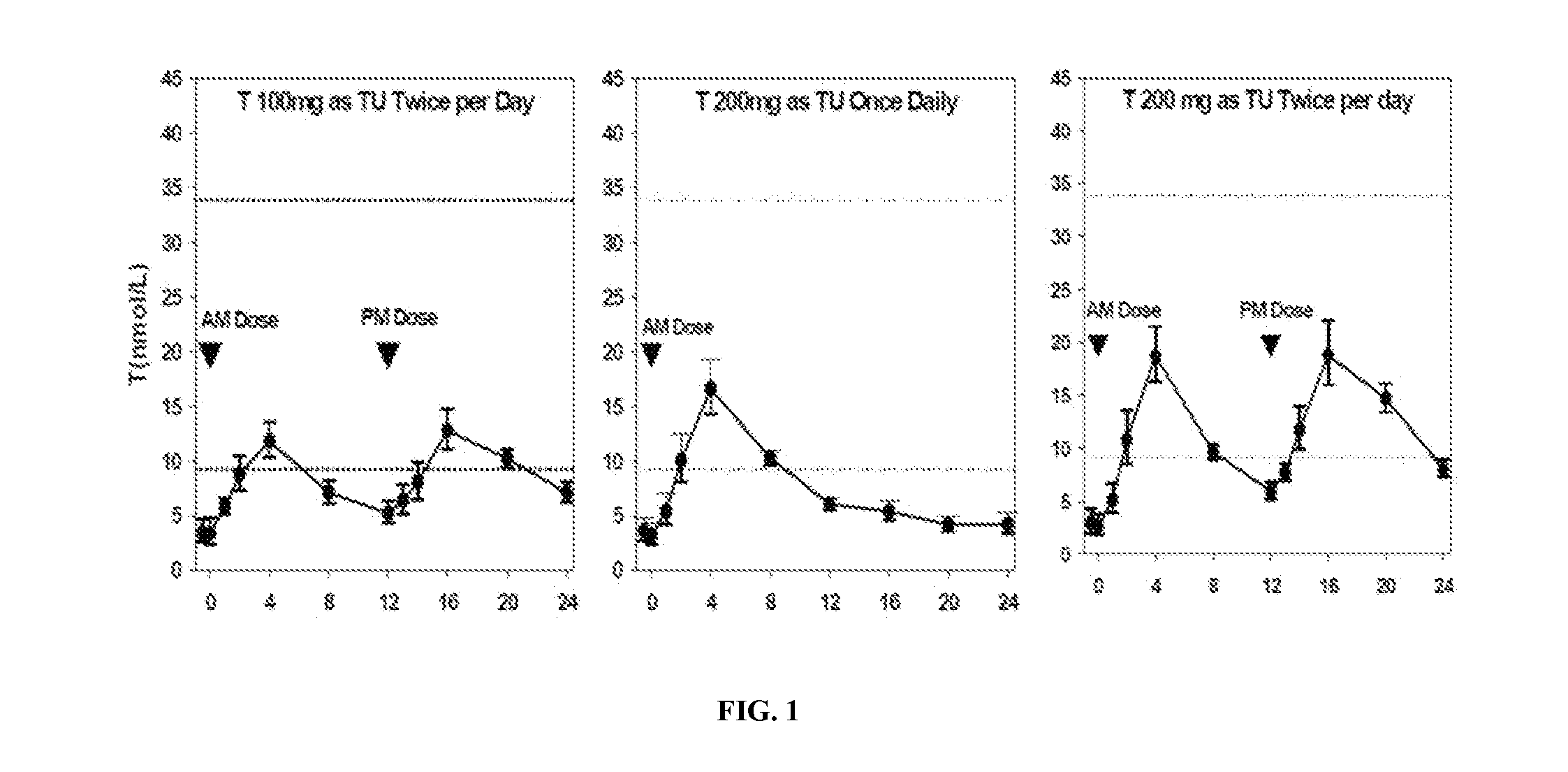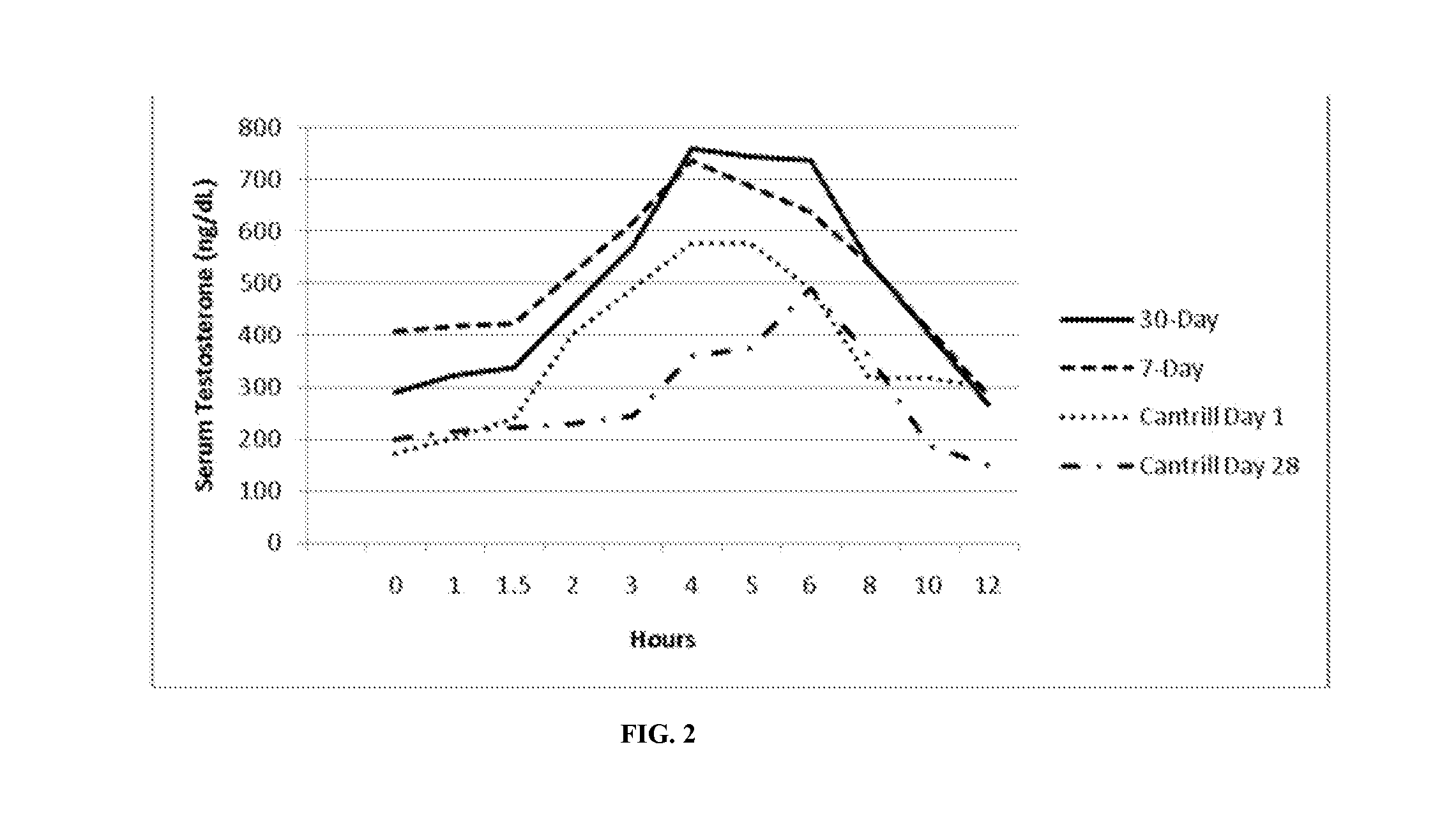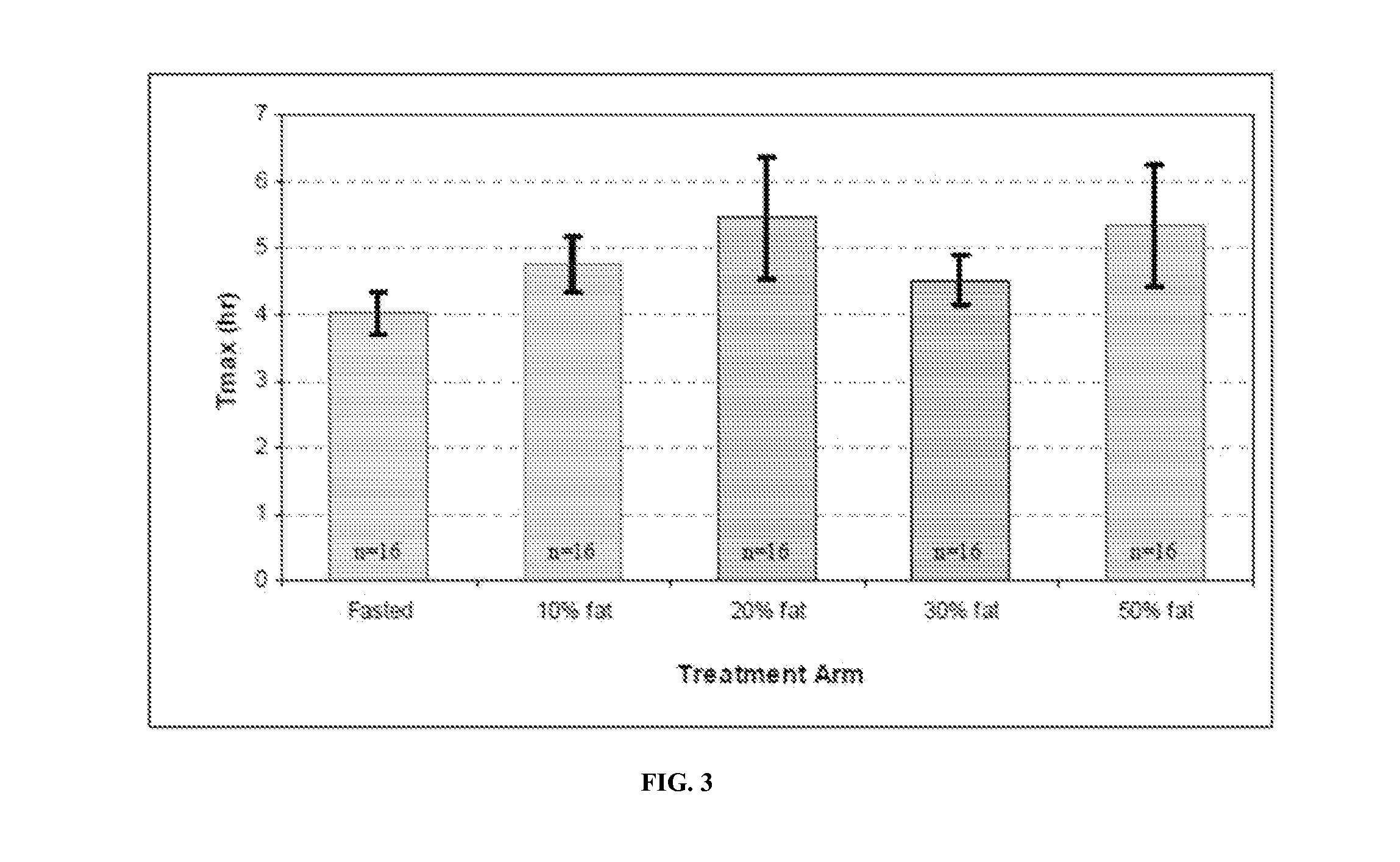Oral pharmaceutical products and methods of use combining testosterone esters with hypolipidemic agents
a technology of hypolipidemic agents and pharmaceutical products, which is applied in the direction of capsule delivery, drug compositions, organic active ingredients, etc., can solve the problems of inadequate clinically effective methods, substantial skin irritation, and hypogonadism in men as a risk factor for osteoporosis, and achieve the effect of no decline in the steady-state serum testosterone respons
- Summary
- Abstract
- Description
- Claims
- Application Information
AI Technical Summary
Benefits of technology
Problems solved by technology
Method used
Image
Examples
example 1
Single-Day Study
[0139]Formulation B was studied for its single-day PK profile upon once- or twice-daily administration to hypogonadal men. The study was designed as an open-label, single-day dosing, sequential, cross-over, PK study. Twelve (12) hypogonadal men were enrolled after giving written informed consent, and all 12 subjects completed the study. Each subject received a daily dose of Formulation B as follows:
1. 200 mg T (as TU) QD, i.e., 2 capsules / dose
2. 200 mg T (as TU) BID (100 mg / dose), i.e., 1 capsule / dose
3. 400 mg T (as TU) BID (200 mg / dose)
[0140]The doses were administered as capsules to subjects five minutes after a meal (breakfast for QD, and breakfast and dinner for BID).
Table 4 provides the relevant PK parameters from the study:
TABLE 4Single-Day Pharmacokinetic Parameters for T, DHT, and DHT:T RatioMeans (Standard Deviations) ofPharmacokineticPharmacokinetic ParametersaParameterRegimen 1Regimen 2Regimen 3(unit)(TU QD 200 mgb)(TU BID 100 mgb)(TU BID 200 mgb)TAUC24 (n...
example 2
Seven-Day Study
[0146]Formulation B was studied for its acute tolerability and steady-state serum PK profile at two doses administered twice-daily to hypogonadal men. The study was designed as an open-label, repeat dose, cross-over, PK study (with food effect examined in one arm).
[0147]Twenty nine (29) hypogonadal men were enrolled after giving written informed consent, 24 of which completed the study. Each subject who completed the study received a regimen of Formulation B as follows:
1. 7 daily doses of 600 mg T as TU BID (300 mg / dose), i.e., 3 capsules / dose
2. 8 daily doses of 400 mg T as TU BID (200 mg / dose).
[0148]Doses were administered as capsules to subjects 30 minutes after initiation of meals (breakfast and dinner), except for Day 8, when the morning dose was administered fasting.
[0149]Peak exposure (Cmax) to T and total exposure (AUC) to T were dose proportional after correction for the endogenous baseline T. The time of peak T concentrations (Tmax) occurred at approximately ...
example 3
Four-Week Study
[0155]Formulation B was also studied to determine the time required to reach steady state when hypogonadal men are treated for 28 days with twice daily dosing of 200 mg T (as TU) (i.e., 2 capsules / dose). The study was designed as an open-label, repeat dose, PK study.
[0156]Fifteen (15) hypogonadal men were enrolled after giving written informed consent, and all completed the study. Each subject received twice-daily doses of 200 mg T as TU for 28 days.
[0157]For each subject, the “Day 28” serial PK sampling day was scheduled for Day 32 of the study. Therefore, each dose compliant subject received a total of 31 daily doses of 400 mg T as TU (i.e., 200 mg T, BID), and a final morning dose of 200 mg T as TU. Doses were administered as capsules, with subjects instructed to take doses 30 minutes after initiation of meals (breakfast and dinner).
[0158]Table 7 provides the relevant PK data from the study:
TABLE 7ATDHTDHT / TE2Cmax995 ± 436151 ± 75 0.380 ± 0.18130.6 ± 14.9or(43.9%)(...
PUM
| Property | Measurement | Unit |
|---|---|---|
| solubility | aaaaa | aaaaa |
| concentration | aaaaa | aaaaa |
| concentration | aaaaa | aaaaa |
Abstract
Description
Claims
Application Information
 Login to View More
Login to View More - R&D
- Intellectual Property
- Life Sciences
- Materials
- Tech Scout
- Unparalleled Data Quality
- Higher Quality Content
- 60% Fewer Hallucinations
Browse by: Latest US Patents, China's latest patents, Technical Efficacy Thesaurus, Application Domain, Technology Topic, Popular Technical Reports.
© 2025 PatSnap. All rights reserved.Legal|Privacy policy|Modern Slavery Act Transparency Statement|Sitemap|About US| Contact US: help@patsnap.com



